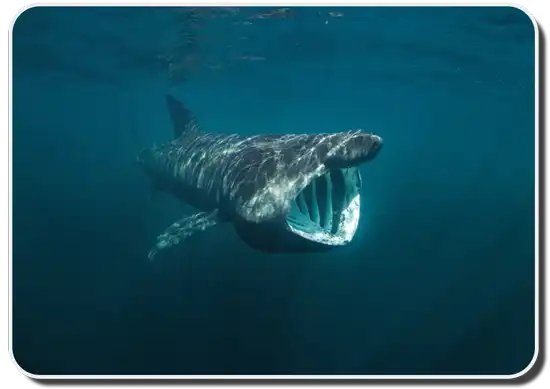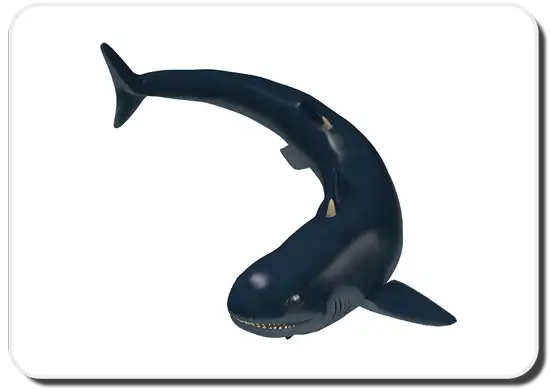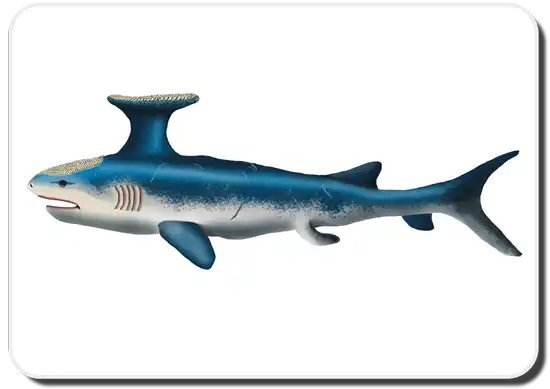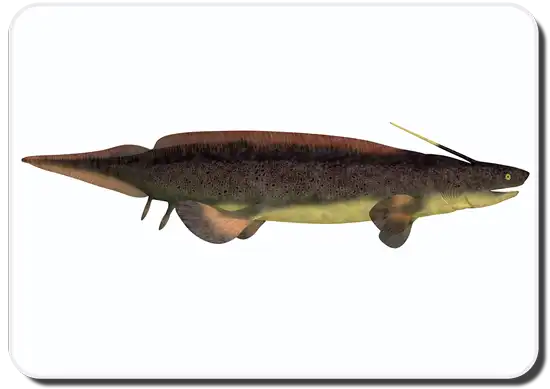The history of sharks goes back a long time. But the term “a long time” doesn’t even begin to cover it. Let’s put it this way: dinosaurs lived during the Mesozoic Era, which began about 245 million years ago.
Sharks, on the other hand, were living on the planet 200 million years before dinosaurs! Is it starting to sink in now? Sharks are without a doubt one of the oldest creatures this planet has ever known.

Fossil Records
In order for scientists to determine information pertaining to the history of sharks in terms of age, appearance, and possible behaviors of ancient sharks, they study fossils. A fossil can be an impression of a prehistoric life form that has been preserved in a rock or mold. It can also be literal remains from the organism itself. Fascinatingly, shark fossils are extremely rare because sharks are mostly comprised of cartilage; cartilage tends to disintegrate too fast to become fossilized. For this reason, most shark fossils are prehistoric teeth, fin spines, and scales.
The Age of Fishes
During the Paleozoic Era, there was a period called the Devonian Period. The Devonian Period was first studied with a Devonian red sandstone found in an area called Devon, England; this is the reason why the period was named Devonian. This period is known for the development of thousands of ancient fish species. Interestingly enough, during these early stages of fish development, they did not have jaws, and their bodies were comprised of cartilage, like the modern day shark. Sharks also developed during this fishy period of earth. They are believed to be descendants of Placoderms, a group of ancient, jawed fish that possessed a dermal skeleton. Placoderms had what is considered armor covering their bodies. Although sharks are identified as descendants of this group, over time they have lost the ability to produce bone both internally and externally. The shark fossil records show that the earliest sharks began developing during the middle of the Devonian Period.
The Cladoselache Shark

In Cleveland, Ohio, 400 million-year-old shark fossils were found and studied. These fossils turned out to belong to an ancient four-foot long Cladoselache shark. As one of the first species of sharks, these Cladoselaches most definitely differ from the modern day shark, however they do have similarities. Like the sharks we see today, Cladoselache Sharks had gill slits and torpedo-shaped bodies. Nonetheless,
these sharks differ greatly from today’s sharks, and even other ancient sharks because they did not have any placoid scales covering their skin. Sharks, both ancient and modern, are known for having tooth-like scales enveloping their skin; they not only protect the shark, but they also aid in swimming techniques. In addition to not owning placoid scales, these prehistoric sharks did not possess claspers. Claspers are usually present on male sharks, and they supply sperm for the female during reproduction. Due to the fact that Cladoselache Sharks did not have claspers, it is actually unknown how they reproduced. They most definitely managed to reproduce and swim without claspers and dermal skin successfully, because Cladoselache Sharks lived in Earth’s waters for about 100 million years.
The Stethacanthus Shark

The Stethacanthus is a prehistoric shark that
lived from 345 million to 280 million years ago. These two-foot long sharks preferred to swim in shallow, warm waters. This particular species of shark is actually quite interesting and often baffles scientists because of two factors. Firstly, the only sharks of this kind that have been detected all have claspers. This would mean that we only know of the male Stethacanthus. There is a type of shark called Symmorium, and the only sharks of that kind that we know of are female. It is possible that the Symmorium is actually the female version of the Stethacanthus, and therefore they mate with each other. Scientists are not completely sure of this, but it sounds very probable. In addition to this intriguing factor,
the Stethacanthus Shark possessed an exceedingly fascinating dorsal fin. This fin was in the same position as the dorsal fin of a modern day shark, however the top of it was flat and enamored in large scales. The appearance of this headgear is often compared to a brush. Even though we are unsure what these dorsal fins were used for, there are a few theories. One belief is that this headgear resembled jaws of a massive being, and therefore deterred any predators. Another theory is that this headgear was used to attract females when mating. Nevertheless, the Stethacanthus sShark was without a doubt an intriguing specimen.
The Xenacanthus Shark

The three-foot long Xenacanthus Shark
existed 345 million years ago during the Devonian Period, and it lived until the Permian Period. These particular sharks were freshwater inhabitants that typically dwelled in rivers and lakes. The Xenacanthus owned V-shaped teeth that enabled them to eat bony fish and crustaceans. Although the Xenacanthus was most definitely a type of shark, its appearance closely resembled that of an eel.
Xenacanthus Sharks had an elongated, thick spine that extended throughout their bodies, starting from the back of their skull. It is believed that the spine of a Xenacanthus was used as protection against possible predators. Following this eye-catching spine was a dorsal fin that looked like a ribbon. The spine and dorsal fin of the Xenacanthus is the reasoning behind the shark’s eel-like appearance.
Shark Evolution
The Cladoselache Shark, Stethacanthus Shark, and Xenacanthus Shark are three types of sharks that existed during the Devonian Period, and based on the look and behaviors of modern day sharks, they are proof that sharks have evolved tremendously over time. The sharks of today all have tooth-like placoid scales covering their skin, and they are made up of cartilage. In addition, the fins and gill slits are relatively similar throughout most of today’s shark species. These factors differed greatly during the beginning days of the shark. Interestingly enough, however, the history of sharks hasn’t changed much for 100 million years. During the time when dinosaurs roamed the earth, the shark families had already evolved to the type of sharks we are accustomed to seeing today.




